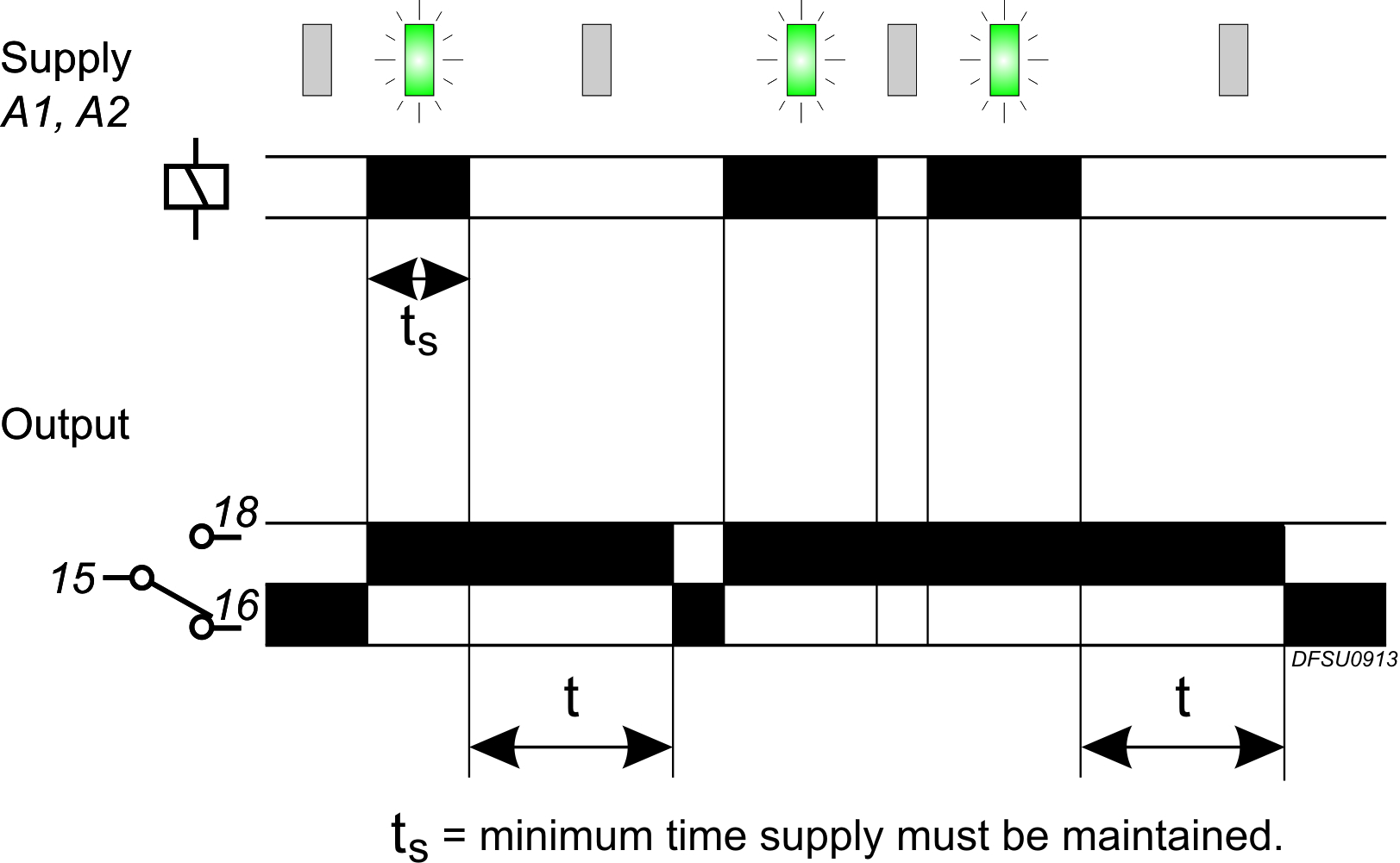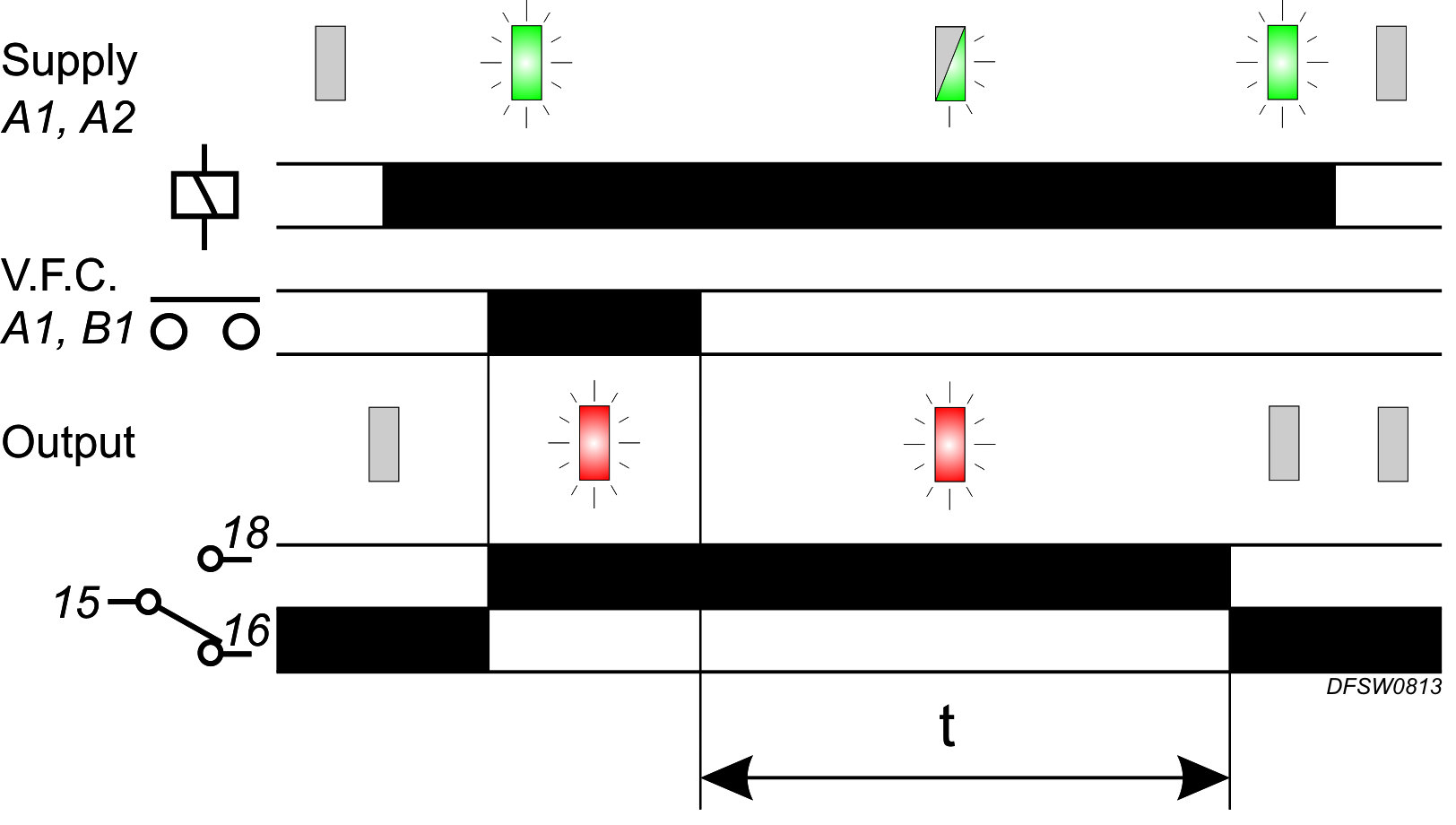What is the difference between True Off Delay and Switch Initiated Delay Off?
Date:2022-12-12 Click:3115
Fundamentally, both timers are similar in that they provide a delay period that the relay remains energised for from an initial trigger. However, the trigger method for both is different.
True Delay Off – This timer utilises storage capacitors internally which retain their charge when the power is removed to the timer. This is sufficient to allow timing periods of up to 10 minutes to be achieved. Operation is straight forward in that power is applied to the timer and the internal relay energises. As soon as power is removed, timing starts but the relay remains energised. When the timing period has elapsed, the relay will de-energise.

Note: With this type of timer, it is essential that the power is applied for at least the minimum period stated in the technical data sheet. This is to ensure the internal capacitors charge correctly and the timer performs as it should. If this is not followed, there is a risk of the internal relay energising and appearing to be in a latched state.
Switch Initiated Delay Off – This timer relies on a permanently connected supply in order for it to function. Triggering of the timer takes place by applying a signal to the trigger input (i.e. contact closing). Usually, this must come from the positive/live side of the supply powering the timer. From here, its the same in that the relay will energise when triggered. When the trigger is removed, timing commences but the relay remains energised. After the timing period has elapsed, the relay will de-energise.

If during the timing period the trigger input is removed and re-applied, the relay output state will not change, however the time period will reset to zero.
e relay output state will not change, however the time period will reset to zero.

